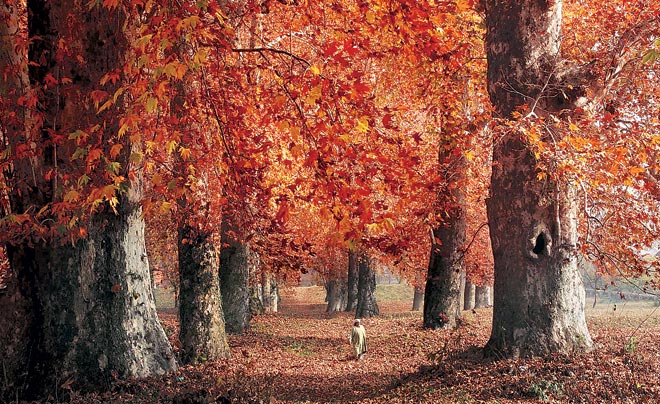
Source: India Today
“There were eternities in which it did not exist, and when it is gone, nothing will have happened.”
Friedrich Nietzsche, On Truth and Lies in a Nonmoral Sense
The prophetic foresight of Fredrick Nietzsche, a 19th-century philosopher and writer, is relatable even today. His sober insights into modernity’s oblivion have been appropriated by many people in epistemic and aesthetic spheres of life. Nietzsche’s gaze has mirrored not only the descriptions of truth’s terrible landscapes; it has also portrayed an imagined conqueror equipped with a great deal of will and resolve. Is Nietzsche’s gaze a mirror in which Kashmir can find its description? If not a land of joyous beginnings, can the valley with its complicated past see the end to its sufferings? Well, answers lie to make sense of its oblivion.
To provide one of the answers, it is essential to have an intimate, up-close relation with Kashmir’s historical present. Nietzschean repository of concepts can help unveil different aspects of Kashmir and perhaps inspire new courses of action. Amid hostilities and resentment, a Nietzschean gaze on the absurdities of Kashmir remains life-affirming. Over the past few decades, the smoke created by bureaucratic and political developments can’t stop his deep and penetrating expression of its oblivion. For the sake of Nietzschean gaze, oblivion here stands for a forgotten or taken-for-granted entity in its differently motivating descriptions. For long years, Kashmir has experienced a state of being consigned to oblivion. Superficiality overshadows the substance. No matter how much we have both faced and denied it, the hardest test remains to reason about it.
The political economy of Kashmir may suggest an entirely different description which however isn’t a concern here. Similarly, socio-religious descriptions which have been and will remain dominant for the foreseeable future, paint it differently. Nonetheless, the Nietzschean understanding of Kashmir might be used to expand his analysis of an Ubermensch (over-man) into something like uber-gasellschaft (Over-Society). Such a construction, if it is possible somehow, can be based on his knowledge about the only possible way out of the dead-end of modern notions of order-making and conformity. Nietzsche’s vengeful and resisting misanthropy can be seen as the expression of and against the antagonism of his advocacy of free-spiritedness and the solidified oblivion of our time.
The experiences of mobility that go back to the Mughal times or even earlier, comprise hardly any Nietzschean sensible landscape. The concert of Kashmir never entered into its final movement of reasoned discourse. That which decided the mood of the situation in Kashmir has often cast it into more despair.
‘I want to open the window a bit. Air! More Air!’
Fredrick Nietzsche The Birth of Tragedy and The Case of Wagner
Nietzsche’s articulation ensures that the centres of distraction and superficiality of common gaze won’t affect the pursuits for a meaningful being. His cynicism may seem to annihilate all that’s presented under different coatings, but it is hard to deny that he extends a promising alternative. His outline for a release from the present and past shackles allows an air of highest possible purity. Nietzsche’s expedition against the moral singularity forms a complex terrain for the human condition’s uncertainty and complexity. Despite the human condition’s fragility, Nietzschean gaze makes efforts to lift things out of immediate circumstances. Amor Fati, a life-affirming formula, prescribes a never-ending struggle to open up the possibilities even in a hell-like situation.
Kashmir through its epistemic and aesthetic description
Nietzscheangaze would preferthe aesthetic description of Kashmir over epistemic one for mainly two reasons: the inability to reach a pure understanding and the possibility of drowning into nihilism. The absolute truth for the epistemological and ontological reasons may not lay well on the canvas of society. If it is possible somehow, it might turn out into a mess with no sense. The aesthetic description is justified for enabling a potential to unfold new realities and keeping up against the absurdity of truth. Generating therapeutic dispositions, Nietzschean course of action unalienates the actors through complete immersion into the struggle. The actor embodies the aesthetic character of his/her destination, which allows the creative and meaningful existence.
Despite the past turmoil and the abyss of the present, the aesthetic description promises a way out and reinforces a will to life and power. Such a gaze philosophises its object to not only allow survival but also augment existence. With the eyes open to the aesthetic description of oblivion, Kashmir can write a new chapter of its history that can end the despair and possibly materialise the hope.
References:
Nietzsche, F. 2005. “On Truth and Lies in a Nonmoral Sense.” In Truth: Engagements Across Philosophical Traditions, edited by Jose Medina and David Wood. Oxford: Blackwell Publishing Ltd.
Nietzsche, F. 1967. “The Birth of Tragedy and The Case of Wagner”, trans with commentary by Walter Kaufmann. New York: Vintage Books.
***
Wajid Abbas is from Sonawari, Kashmir. He is a New Delhi based writer and independent researcher. He can be found at wajidshn@gmail.com.